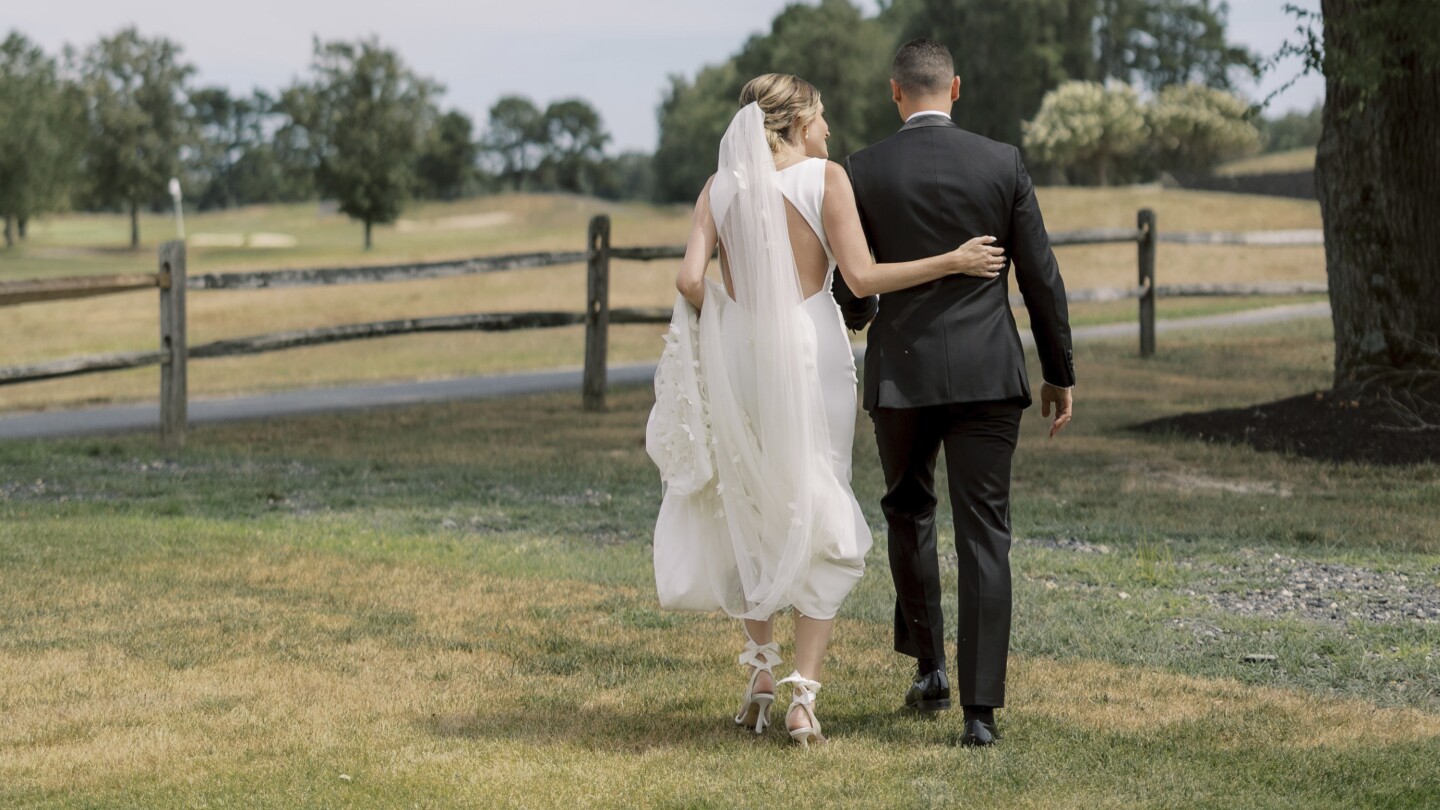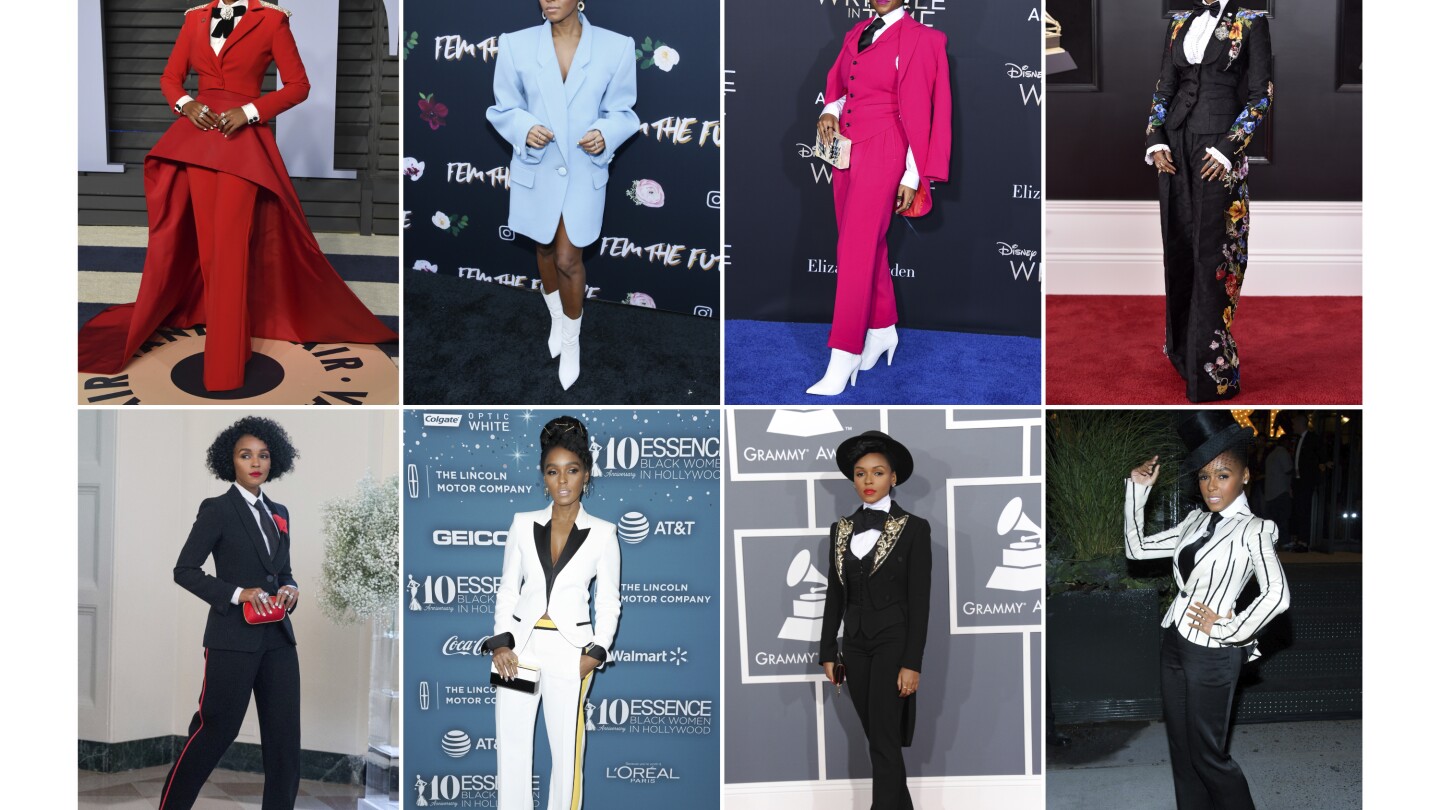Lifestyle
How do I keep my wedding photography on track?

NEW YORK (AP) — Like all brides, Elana Goldin had high hopes for her wedding photos and video.
“I loved their images,” she said of the company picked by her dad and future mother-in-law. “They were award-winning. They were in a ton of magazines. I really liked the vibe of the owner.”
The feeling didn’t last.
The photographer, who showed up 45 minutes late with a team of two, wasn’t the owner, as the company had promised. She was someone Goldin had never spoken to. The fill-in had a bad attitude from the start, said Goldin, who lives in Chicago and got married last May in Lake Geneva, Wisconsin.
Among other things, the photographer criticized Goldin’s bridal shoes, jewelry and perfume as second rate for traditional close-up shots, and she picked apart the bouquets without permission to get images before the ceremony.
“She and the florist got into a fight. There was friction from the moment she walked in,” Goldin said.
Looking back, Goldin said she would have done a few things differently.
We asked wedding planners and photographers to also weigh in on how they think photo disaster can be averted.
Don’t be afraid to voice concerns
Goldin wishes she had been more assertive. She had provided a shotlist ahead of time, but the photographer assigned to the bride and bridesmaids started making demands on where she wanted Goldin to pose.
“I’m in my dress and she said let’s take a picture in the shower, because it was a very big, glamorous shower. My sister was like, absolutely not. Not happening,” Goldin recalled.
At the venue, the photographer insisted on taking photos outside. The weather was rainy and windy, and the lighting was dreary.
“It was disgusting outside. My dress got all dirty at the bottom. My hair starts frizzing. The bridesmaids came out and our hair was blowing everywhere. The pictures were awful,” Goldin said.
Don’t hire friends or family unless they’re pros
You love them dearly. But New Jersey-based wedding planner Danielle Rothweiler of Rothweiler Event Design advises against it.
“I always tell my couples, stop hiring your friends and family because if something goes wrong, think of that conversation that you’re going to have. No one wants that,” she said.
One client took up an uncle on his offer to shoot her wedding as his gift. He missed half the shots and didn’t understand the importance of timing. He also spent a good amount of time just being a guest and not taking pictures at all.
“She never said anything. The pictures weren’t great,” Rothweiler said. “I have a wedding coming up this year and half the vendor list is friends and family and I’m terrified. I’m so scared about it.”
Read up on the process and get technical
Michelle Jackson, who owns the photo vendor Bambino International based in Cincinnati, Ohio, said some basic questions about equipment can go a long way.
Make sure your photographers have back up camera bodies and other crucial equipment of the same quality as their primary gear, she said. Cameras with dual slots for SD cards or XQD cards are optimal.
“Everything’s being copied onto two cards,” she said. “The worst disaster for a photographer is you have no pictures at all because of equipment failure. Couples don’t think about that.”
In the same vein, San Francisco wedding photographer Oscar Urizar, the proprietor of Red Eye Collection in San Francisco, said couples should ensure they have the rights to personal use of their photos. That allows them to print, share and display them for non-commercial purposes.
“I started in the film industry. If you didn’t get your negatives, you couldn’t print your photos. It’s kind of that same thinking,” he said.
Plan group shots meticulously ahead of time
There’s nothing more chaotic than organizing group shots at weddings. The larger the wedding, the more chaotic it can be.
Wedding planner Tirusha Dave, founder of the luxury market Bravura Brides, serves South Asian couples around the world with guest lists up to 300 or more.
She puts together a shareable document and asks couples to list every person expected in each group shot, but she doesn’t stop there. She has them designate one person to serve as wrangler. The wrangler must know every person in the group by sight so they can be chased down if necessary.
“I tell my couples, I’m really great at what I do but I don’t know your second cousins, your extended aunts and uncles,” Dave said.
Each group is assigned a number that’s announced when it’s time to gather.
Good photos mean a schedule must be kept
Dallas-area photographer April Pinto, founder and co-owner of April Pinto Photography, has a stable of shooters. They can juggle up to four weddings a week.
They sink or swim by how well the timeline is observed. Not an easy task, Pinto said, “when you have a coordinator timing you and the mother of the groom who wasn’t on the Zoom call making her own agenda and stressing out the bride. We’re in the middle of all of that.”
But that’s just part of the challenge. The other part?
The rowdy bridesmaid, Pinto said. She’s somebody who might have had a bit too much Champagne and feels like she should be in charge.
“If a bridesmaid is feeling a little too spicy, we try to give her tasks,” Pinto said. “I find that keeping people in general engaged and involved can go a long way. You can turn all that stress into a happy time.”
Lifestyle
For Black men, fashion has been a tool of self-expression — and a way they’ve been judged

NEW YORK (AP) — Growing up on the south side of Chicago, the Rev. Dr. Howard-John Wesley was given the message early on: What one wore as a Black man mattered.
Wesley’s pastor father, who migrated from Louisiana after World War II in search of more opportunities than those readily available to Black people in the Deep South, “always had an impeccable sense of shirt and tie and suit.”
“In order to move in certain spaces where colored people were not allowed to be, you want to be dressed the right way to be able to fit in,” says Wesley, 53, now a senior pastor in Alexandria, Virginia.
But Wesley also got an early warning: What he wore could be used against him. His father forbade baseball caps because some street gang members wore them in certain ways, and his father was concerned authorities would make stereotypical or racist assumptions about his son if he were seen wearing one.
Clothing as message. Fashion and style as tools, signifiers of culture and identity, whether intentional or assumed. There’s likely no group for whom that’s been more true than Black men. It’s not just what they wear, but also how it’s been perceived by others seeing it on a Black man, sometimes at serious cost.
“It’s always a dialogue, between what you can put on and what you can’t take off,” says Jonathan Square, assistant professor at Parsons School of Design and among the advisers to a new exhibit at the Metropolitan Museum of Art’s Costume Institute that kicks off with Monday’s Met Gala.
Clothing matters, and not just at the Met Gala
“Superfine: Tailoring Black Style,” opening to the public May 10, focuses on Black designers and menswear. It uses the 2009 book, “Slaves to Fashion: Black Dandyism and the Styling of Black Diasporic Identity,” by guest curator and Barnard College professor Monica L. Miller, as a foundational inspiration for the show. The dress code for the celebrity-laden, fashion extravaganza fundraiser that is the Met Gala is “Tailored For You,” with high-profile Black male entertainers like Pharrell Williams, Lewis Hamilton, Colman Domingo and A$AP Rocky joining Vogue editor Anna Wintour as co-chairs.
“When we’re talking about Black men … we are talking about a group, an ethnic and racial group and cultural group that has historically dealt with adversity, oppression, systemic oppression,” says Kimberly Jenkins, fashion studies scholar and founder of the Fashion and Race Database, who contributed an essay for the exhibit’s catalog. “And so clothing matters for them in terms of social mobility, self-expression, agency.”
Through the decades, that self-expression has taken many forms and been adopted by others. Take the zoot suit, first popularized in the 1920s in urban centers like New York’s Harlem, with its wide-legged, high-waisted pants and long suit coats with padded shoulders. The 1980s and 1990s saw the rise of styles related to hip-hop culture, such as jeans worn sagging off the hips, oversized jerseys and jackets with designer logos. Hoodies, sneakers and other streetwear were popularized by Black men before becoming global fashion staples.
For some, it was about always being dressed “appropriately” or “respectably” to demonstrate to the mainstream that Black men were in fact equal, not lesser beings, criminals or thugs. The Met exhibit, for example, includes material from civil rights activist W.E.B. Du Bois that showcases how seriously he took the tailoring of his clothes. Gala co-host A$AP Rocky made a point of tailored suits and high fashion earlier this year during his trial on firearms charges for which he was ultimately found not guilty — Yves Saint Laurent even sent out a press release touting his court attire.
Others purposely picked their clothing as a pushback and challenge to white standards of what was acceptable, like the Black Panthers’ berets and black leather jackets, or colorful dashikis that signaled connection to Pan-Africanism.
But it has never been a one-way message. Debates over the clothes Black men wear and how they wear them have at times turned into a form of cultural and literal policing, like when a young Black man sued a New York department store in 2013, saying he was racially profiled and detained by police after buying an expensive belt.
The weaponization of fashion
Elka Stevens, associate professor and fashion design program coordinator at Howard University, describes a gatekeeping weaponization of fashion, where some believe “people don’t have the right to wear the finest designer clothes based upon their skin color, or how they look, or how they’re being classified.”
“But if you don’t dress at a particular standard, or you don’t dress what’s considered to be appropriate for said venue or occasion, that gets weaponized as well,” she adds.
Zoot suits were condemned in the WWII era as unpatriotic for how much fabric they required during wartime scarcity. When Allen Iverson and other athletes started bringing hip-hop style and sensibility to the NBA, the league pushed back in 2005 with a dress code calling for business attire for players on the sidelines to promote what it considered a “professional” image.
And even as streetwear styles and sneakers have become big business for global fashion, they can still be looked down upon based on the body wearing them, says Stevens.
“That which was previously associated with street culture and particularly Black street culture, now is part of our everyday,” she says. “But again, who’s wearing it makes a huge difference.”
There’s perhaps no starker example than that of Trayvon Martin, the 17-year-old killed in Florida in 2012. He was shot by a man who found the sight of the hoodie-wearing Black teen suspicious, leading to the confrontation in which Martin died.
Even as hoodies have become essential dressing for everyone from kids to corporate CEOs, it’s “the presence of that person who we’ve identified as being Black or someone identifies as being Black that causes the problem no matter what, no matter what they have on,” Stevens says.
It’s a reality of life in the United States that Wesley has wrestled with. After Martin’s death, he wore a hoodie while behind the pulpit at Alfred Street Baptist Church and spoke of his worries about how his own young sons would be perceived.
Like his father before him and for the same reasons, there were certain styles he never allowed his sons — now 21 and 18 — to wear. Sagging jeans? He “just won’t allow it. I refuse to. Not only because of fear of being stereotyped by the police, but also labeled by society. Maybe I’m wrong for that. I don’t know,” Wesley says.
“To me, it’s a shame that my attire can neither hide my color, it can never elevate me above it in your stereotype, but it can always confirm it,” Wesley says. “So my suit doesn’t get me out of, ‘Oh, he’s still a Black man who’s a threat,’ but the hoodie makes it go, ‘Oh, he’s a Black man who’s the threat.’”
___
For more coverage of the 2025 Met Gala, visit: https://apnews.com/hub/met-gala
Lifestyle
What is dandyism, the Black fashion style powering the 2025 Met Gala?

NEW YORK (AP) — Fashion icons like Dapper Dan, Janelle Monáe and the late André Leon Talley are known for their distinctive approaches to sartorial style — bold splashes of color, luxurious fabrics, playful construction, capes — but fashion savants and historians agree that a common thread weaves their tailored looks together: dandyism.
The history-laden style movement will be front and center as part of the Metropolitan Museum of Art’s Costume Institute spring exhibit, “Superfine: Tailoring Black Style,” kicking off with the biggest night in fashion, Monday’s Met Gala.
Inspired by Monica Miller’s book “Slaves to Fashion: Black Dandyism and the Styling of Black Diasporic Identity,” the exhibit focuses on Black style and specifically menswear from the 18th century to present day, with dandyism as a unifying theme.
What is dandyism?
Once used to describe the aristocratic style and leisurely pursuits of figures like Regency England’s Beau Brummell, dandyism has been recontextualized over the years to embody liberation and resistance through exuberant self-expression.
This evolution of the term began with the trans-Atlantic slave trade. Miller, guest curator of the Met exhibit, writes how, in the 18th century, young, dandified Black servants in England were forced to wear gold, brass or silver collars with padlocks and fine livery — uniforms for slaves and servants — that signaled their owners’ wealth.
“They wanted the enslaved person to stand out almost as if they were a luxury item,” said Jonathan Square, Parsons School of Design assistant professor and one of the advisers on the Met exhibit.
Slaves arrived in America with few or no belongings. What they had left, they treasured, be it beads or small precious objects, Miller writes.
“This is as true for those who were deliberately dressed in silks and turbans, whose challenge was to inhabit the clothing in their own way, as for those who were more humbly attired, who used clothing as a process of remembrance and mode of distinction (and symbolic and sometimes actual escape from bondage) in their new environment,” Miller explains in her book.
Stripped of their identities, enslaved people often added their own flair to their tailored Sunday best looks for church or on holidays.
Post-Emancipation, Black Americans had the chance to reclaim their autonomy and carve out new lives for themselves, paving the way for the Harlem Renaissance.
Dandyism enters a new era with the Harlem Renaissance
Black Americans fled the South for cities like Chicago, Los Angeles and New York in a period dubbed the Great Migration. From the 1920s to the 1930s, New York’s Harlem neighborhood became an influential and fertile landscape for Black cultural expression. From Langston Hughes and Zora Neale Hurston to Duke Ellington and Louis Armstrong, its prominent minds reshaped the fabric of American culture and challenged prejudiced beliefs.
The Harlem Renaissance gave fashion a soul, said Brandice Daniel, founder of Harlem’s Fashion Row, an agency that connects designers of color with retailers and brand opportunities.
“It was this birthplace of this visual identity that spoke to what we now call Black excellence,” she said.
The renaissance meant living and dressing boldly for Black Americans, pushing past societal confines and making themselves visible. Adding their own twist on mainstream looks, women donned furs and beaded dresses while men experimented with tailored fabrics, pristine fedora hats, two-toned oxfords and billowing silhouettes.
“Many of us have a photo of our grandfather decked out with the suiting, but it’s also the stance and the kind of posture and the assertion of presence,” said Tara Donaldson, co-author of “Black In Fashion: 100 Years Of Style, Influence, and Culture.”
W.E.B. Du Bois, a pivotal figure of the era who often appeared in a three-piece suit, a frock coat and top hat, understood the power of self-fashioning, said Valerie Steele, director of The Museum at the Fashion Institute of Technology. At the 1900 Paris Exposition, Du Bois mounted a photographic exhibit centered on showcasing Black Americans’ economic, social and cultural contributions to combat stereotypes.
“That kind of self-fashioning is very much a way of reclaiming a sense of self-respect that had been denied by a society that aggressively was saying, ‘No, no you can’t have that,’” Steele said.
A key, enduring look: the zoot suit
One style that arose out of the Harlem Renaissance, directly linked to dandyism, was the zoot suit. The suit, defined by high-waisted draped pants and oversized jackets with exaggerated shoulders and large lapels, was subversive simply by taking up space. Because of fabric rations during World War II, owning a zoot suit, with its excessive use of fabric, was an act of protest, Square said.
“It’s meant to be a provocation,” Square said. “But also, it’s a form of protection, covering a part of your body, sort of saying, ‘You don’t have access to this.’”
The style was quickly adopted by Mexican American and Filipino American men in Los Angeles. In 1943, servicemen and police officers attacked Black, Mexican and Filipino men in what was labeled the Zoot Suit Riots. The zoot suit lives on today in the gender-fluid designs of Willy Chavarria.
Dandyism
transcends gender
Dandyism was not limited to men. Following World War I, women began breaking down fashion’s gender norms. With her tuxedo and top hat, blues singer and entertainer Gladys Bentley epitomized how women in the Harlem Renaissance blurred gender lines and adopted more masculine styles of dress.
Singer and actor Monáe, who sits on this year’s Met Gala’s host committee, is not shy about standing out on a red carpet in her tailored, playful looks. Monáe’s distinct style and flourishes with oversized hats, whimsically tailored suits and ornate bow ties personify the dandy style.
As Monáe and the rest of the starry guest list arrive in their glamorous “Tailored for You” looks, Monday will be a night to remember all the dandies who styled out before.
“Black people, Black men are finally getting their flowers for being true style icons,” said designer Ev Bravado, co-founder of Who Decides War. “It is amazing to see the ancestral work being put on display.”
Lifestyle
Visa wants to give artificial intelligence ‘agents’ your credit card

Artificial intelligence “agents” are supposed to be more than chatbots. The tech industry has spent months pitching AI personal assistants that know what you want and can do real work on your behalf.
So far, they’re not doing much.
Visa hopes to change that by giving them your credit card. Set a budget and some preferences and these AI agents — successors to ChatGPT and its chatbot peers — could find and buy you a sweater, weekly groceries or an airplane ticket.
“We think this could be really important,” said Jack Forestell, Visa’s chief product and strategy officer, in an interview. “Transformational, on the order of magnitude of the advent of e-commerce itself.”
Visa announced Wednesday it is partnering with a group of leading AI chatbot developers — among them U.S. companies Anthropic, Microsoft, OpenAI and Perplexity, and France’s Mistral — to connect their AI systems to Visa’s payments network. Visa is also working with IBM, online payment company Stripe and phone-maker Samsung on the initiative. Pilot projects begin Wednesday, ahead of more widespread usage expected next year.
The San Francisco payment processing company is betting that what seems futuristic now could become a convenient alternative to our most mundane shopping tasks in the near future. It has spent the past six months working with AI developers to address technical obstacles that must be overcome before the average consumer is going to use it.
For emerging AI companies, Visa’s backing could also boost their chances of competing with tech giants Amazon and Google, which dominate digital commerce and are developing their own AI agents.
The tech industry is already full of demonstrations of the capabilities of what it calls agentic AI, though few are yet found in the real world. Most are still refashioned versions of large language models — the generative AI technology behind chatbots that can write emails, summarize documents or help people code. Trained on huge troves of data, they can scour the internet and bring back recommendations for things to buy, but they have a harder time going beyond that.
“The early incarnations of agent-based commerce are starting to do a really good job on the shopping and discovery dimension of the problem, but they are having tremendous trouble on payments,” Forestell said. “You get to this point where the agents literally just turn it back around and say, ‘OK, you go buy it.’
Visa sees itself as having a key role in giving AI agents easier and trusted access to the cash they need to make purchases.
“The payments problem is not something the AI platforms can solve by themselves,” Forestell said. “That’s why we started working with them.”
The new AI initiative comes nearly a year after Visa revealed major changes to how credit and debit cards will operate in the U.S., making physical cards and their 16-digit numbers increasingly irrelevant.
Many consumers are already getting used to digital payment systems such as Apple Pay that turn their phones into a credit card. A similar process of vetting someone’s digital credentials would authorize AI agents to work on a customer’s behalf, in a way Forestell says must assure buyers, banks and merchants that the transactions are legitimate and that Visa will handle disputes.
Forestell said that doesn’t mean AI agents will take over the entire shopping experience, but it might be useful for errands that either bore some people — like groceries, home improvement items or even Christmas lists — or are too complicated, like travel bookings. In those situations, some people might want an agent that “just powers through it and automatically goes and does stuff for us,” Forestell said.
Other shopping experiences, such as for luxury goods, are a form of entertainment and many customers still want to immerse themselves in the choices and comparisons, Forestell said. In that case, he envisions AI agents still offering assistance but staying in the background.
And what about credit card debt? The credit card balances of American consumers hit $1.21 trillion at the end of last year, according to the Federal Reserve of New York.
Forestell says consumers will give their AI agents clear spending limits and conditions that should give them confidence that the human is still in control. At first, the AI agents are likely to come back to buyers to make sure they are OK with a specific airplane ticket. Over time, those agents might get more autonomy to “go spend up to $1,500 on any airline to get me from A to B,” he said.
Part of what is attracting some AI developers to the Visa partnership is that, with a customer’s consent, an AI agent can also tap into a lot of data about past credit card purchases.
“Visa has the ability for a user to consent to share streams of their transaction history with us,” said Dmitry Shevelenko, Perplexity’s chief business officer. “When we generate a recommendation — say you’re asking, ‘What are the best laptops?’ — we would know what are other transactions you’ve made and the revealed preferences from that.”
Perplexity’s chatbot can already book hotels and make other purchases, but it’s still in the early stages of AI commerce, Shevelenko says. The San Francisco startup has also, along with ChatGPT maker OpenAI, told a federal court it would consider buying Google’s internet browser, Chrome, if the U.S. forces a breakup of the tech giant in a pending antitrust case.
-

 Conflict Zones1 day ago
Conflict Zones1 day agoAbout 600 North Korean soldiers killed in war in Ukraine, lawmakers say | Russia-Ukraine war News
-

 Europe23 hours ago
Europe23 hours ago16-year-old suspect detained after 3 killed in shooting in Sweden
-

 Middle East18 hours ago
Middle East18 hours agoIran hangs man convicted of spying for Israel’s Mossad | Espionage News
-

 Middle East2 days ago
Middle East2 days agoI was forced to burn my books to survive in Gaza | Israel-Palestine conflict
-

 Europe2 days ago
Europe2 days agoWhat caused the power outage in Spain and Portugal? Here’s what we know
-

 Africa1 day ago
Africa1 day agoResearchers study using planes to cool the earth amidst global warming
-

 Africa1 day ago
Africa1 day agoBomb Blast Kills 26 in Northeast Nigeria
-

 Asia1 day ago
Asia1 day agoFall of Saigon: US officers who broke rank to save lives recall final days of Vietnam War 50 years on




